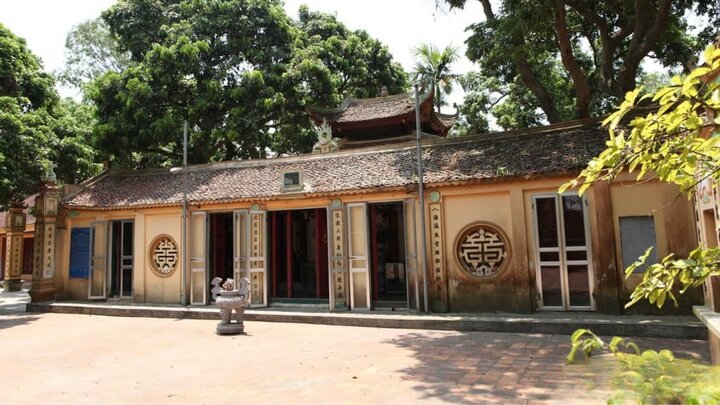1. Overview of Ba Vu Temple, Spiritual Cultural Symbol of Ha Nam
Ba Vu Temple is located in Vu Dien village, Bac Ly commune, Ninh Binh province, about 70 km south of Hanoi center. The temple is situated beside the gentle Red River, convenient for travel due to its proximity to major transportation routes, especially suitable for travel by private car or bus from northern provinces.
The attraction of Ba Vu Temple not only comes from its convenient location but also from the deep cultural and historical layers the temple preserves. Associated with the legend "The Story of the Woman of Nam Xuong", the temple became a national historical and cultural relic in 1993. Each year, this place welcomes thousands of visitors to offer incense and pray for peace, and to learn about the image of Vietnamese women who embody virtue.
The history of Ba Vu Temple originates from the 15th century, initially a small shrine built by villagers by the riverbank to commemorate Mrs. Vu Thi Thiet. When King Le Thanh Tong passed through this region, he heard the moving story, he granted a royal decree and provided funds and land to build the temple. Through many flood seasons, the temple had to be relocated several times but it has maintained its position as the spiritual center and a repository of cultural memory for the local people.
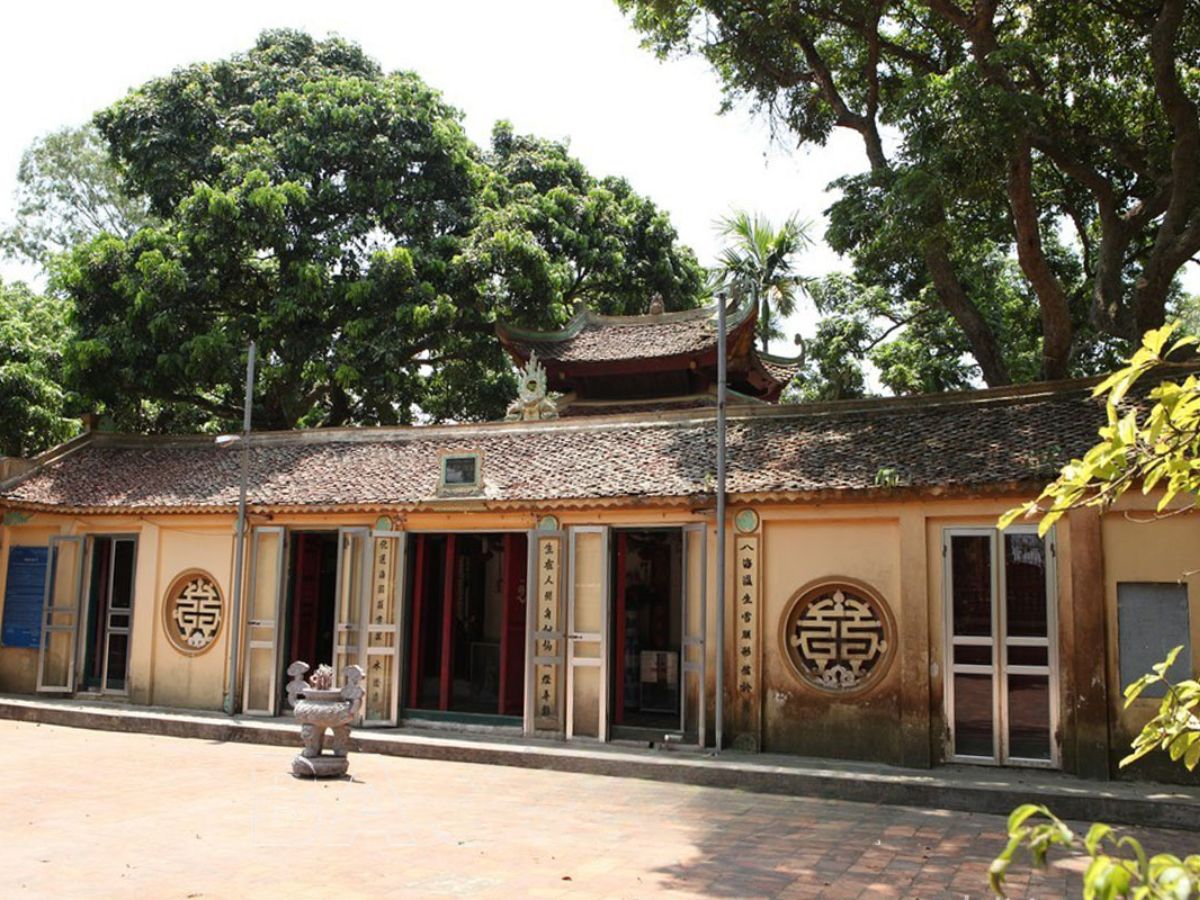
Ba Vu Temple, where the immortal story in literature "The Story of the Woman of Nam Xuong" is preserved. (Source: Ha Nam Newspaper)
2. Guide to Ba Vu Temple 2025: Convenient transportation and detailed address
2.1. Route to Ba Vu Temple from Hanoi and Northern provinces
To reach Vu Dien Temple ( Ba Vu Temple ) in old Ha Nam, you can travel by motorbike or car. There are two main routes you can refer to. If starting from Hanoi, you just need to follow National Highway 1A southwards, after passing Vinh Tru town, turn onto Cau Khong road and go straight for about 4 km more to reach the temple. If you are traveling from Phu Ly city, follow National Highway 1A, then turn onto Road 62 and continue following the directions to the Vu Dien Temple area. To make the trip more convenient, don't forget to prepare some necessary personal items such as drinking water, a camera, and comfortable, polite attire.
With coaches, you can choose routes departing from My Dinh, Giap Bat, or Gia Lam bus stations to Ha Nam, with ticket prices ranging from 80,000 to 120,000 VND per trip. Coaches operate continuously throughout the day, with additional trips on weekends and holidays. If traveling by personal motorbike, this route is easy and also allows you to enjoy the peaceful Northern countryside scenery along the way.
2.2. Traveling from other areas to Ba Vu Temple.
Guests starting from the Central or Southern regions can arrive at Noi Bai Airport then choose a taxi or limousine to Phu Ly city, continue to take a local bus or taxi to Ba Vu Temple . If using a North-South coach, the bus company usually stops in Phu Ly, from there you can choose a motorbike taxi or taxi to the temple.
The cost for long journeys usually ranges from 200,000 to 500,000 VND depending on the vehicle type, excluding food and accommodation along the way. Travel time from the Central region is about 8 to 12 hours, while from the South it takes about 15 to 20 hours if choosing a coach.
2.3. Local transportation, parking, and practical notes.
The Ba Vu Temple area has a centralized parking lot near the dike area, about 100 to 200 m from the entrance. Motorbike parking fees range from 5,000 to 10,000 VND, cars from 20,000 to 30,000 VND depending on parking duration. The relic management board usually assigns staff to coordinate parking in an orderly and safe manner.
During the festival season, especially the 3rd lunar month, the number of visitors increases, so you should arrive early for convenient parking. The most suitable time to visit is on weekdays, in the early morning or late afternoon to enjoy the peace and sacredness of the relic site.
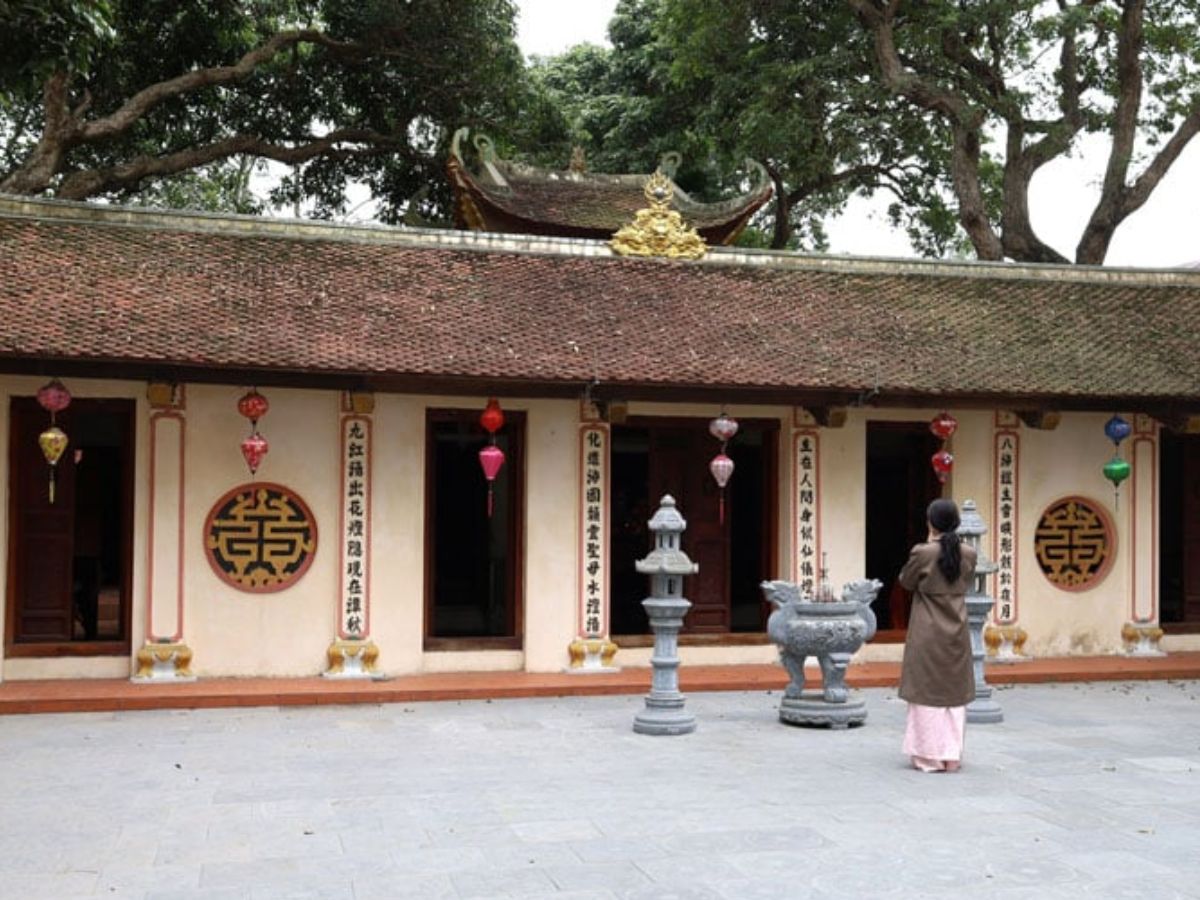
During holidays, it is advisable to travel to the temple early to avoid traffic jams. (Source: Collected)
3. History and legends about Ba Vu Temple
3.1. Vu Thi Thiet in the story "The Girl from Nam Xuong"
Vu Thi Thiet, also known as Vu Nuong, is the central character in the legend of a virtuous woman from the post-Tran period. She was renowned for her filial piety towards her parents, her unwavering loyalty to her husband, and her compassionate heart. Due to her husband's suspicion and misunderstanding, she bore immense unjust suffering.
Unable to clear her name, she took her own life in the Hoang Giang River to preserve her honor. Legend has it that Quan Am Bodhisattva saved her and brought her to live in the underwater palace, since then, people have revered her as a protective deity. The image of Vu Thi Thiet is a symbol of Vietnamese women with their loyalty, patience, and the will to sacrifice for justice.
3.2. The process of building and developing the temple throughout historical periods.
The formation of Ba Vu Temple began with a small shrine erected by the local people to commemorate Vu Thi Thiet, located on the riverbank in ancient times. A significant milestone was in the 15th century, when King Le Thanh Tong, passing through Nam Xuong, heard the story of her and decided to officially grant her a royal decree of consecration.
King Le Thanh Tong not only recognized the divine status of Lady Vu but also provided funding and land for the people to build and expand the temple. Over many centuries, due to the influence of the Red River floods, Ba Vu Temple had to be relocated multiple times from the riverbank inland behind the dyke for safety. Each time it was renovated, local artisans always respectfully preserved the traditional architecture and added artifacts, helping the temple achieve its majestic appearance today.

Vu Thi Thiet - a woman of beauty and misfortune. (Source: Collected)
4. Experiencing the Architecture and Precious Artifacts at Ba Vu Temple
4.1. Architecture of Ba Vu Temple: Distinctive Features of the Later Lê - Nguyễn Era.
Ba Vu Temple is located on a spacious plot of land, adjacent to the dike of the Red River. Although the temple has been relocated due to bank erosion, its current architecture still retains distinctive features. The most prominent is the temple gate (three-gate entrance) with four bronze pillars over 6m high, creating an imposing and grand appearance. Each pillar is divided into four distinct sections, topped with a Nghe statue. Flanking the main gate are two side gates, built in an arched style with eight tiers of roof.
The entire temple complex is built in the shape of the character "Môn" (門), with enclosed rows of houses. The front hall has seven bays, with beams, rafters, and purlins designed in a traditional style. Following this is the middle hall, built higher and rectangular in shape, with a multi-tiered roof structure, and curved eaves. Although the carved patterns on the wood are quite simple, they still show sophistication. Overall, the temple's architecture reflects the traditional style of the 19th century, with creative touches.
4.2. Precious Artifacts within the Temple
Ba Vu Temple preserves many precious artifacts, including some notable ones. These include a bronze chime cast during the Later Lê Dynasty (1699) with intricate carved patterns. Another special artifact is a bronze bell from the Tây Sơn Dynasty (1801), a testament to the temple's rich history. Additionally, the temple houses a bronze statue of Lady Vu Thi Thiet, with a gentle face that evokes a tragic life.
Notably, a stone stele inscribed with a Nôm poem by King Lê Thánh Tông praising Lady Vũ's virtue and unjust circumstances is an artifact that attracts visitors' attention. Ba Vu Temple also possesses royal decrees from the Nguyễn Dynasty, autographs of many scholars and poets, and worship items made of porcelain and precious wood dating back hundreds of years, reflecting the rich religious traditions of the local community.
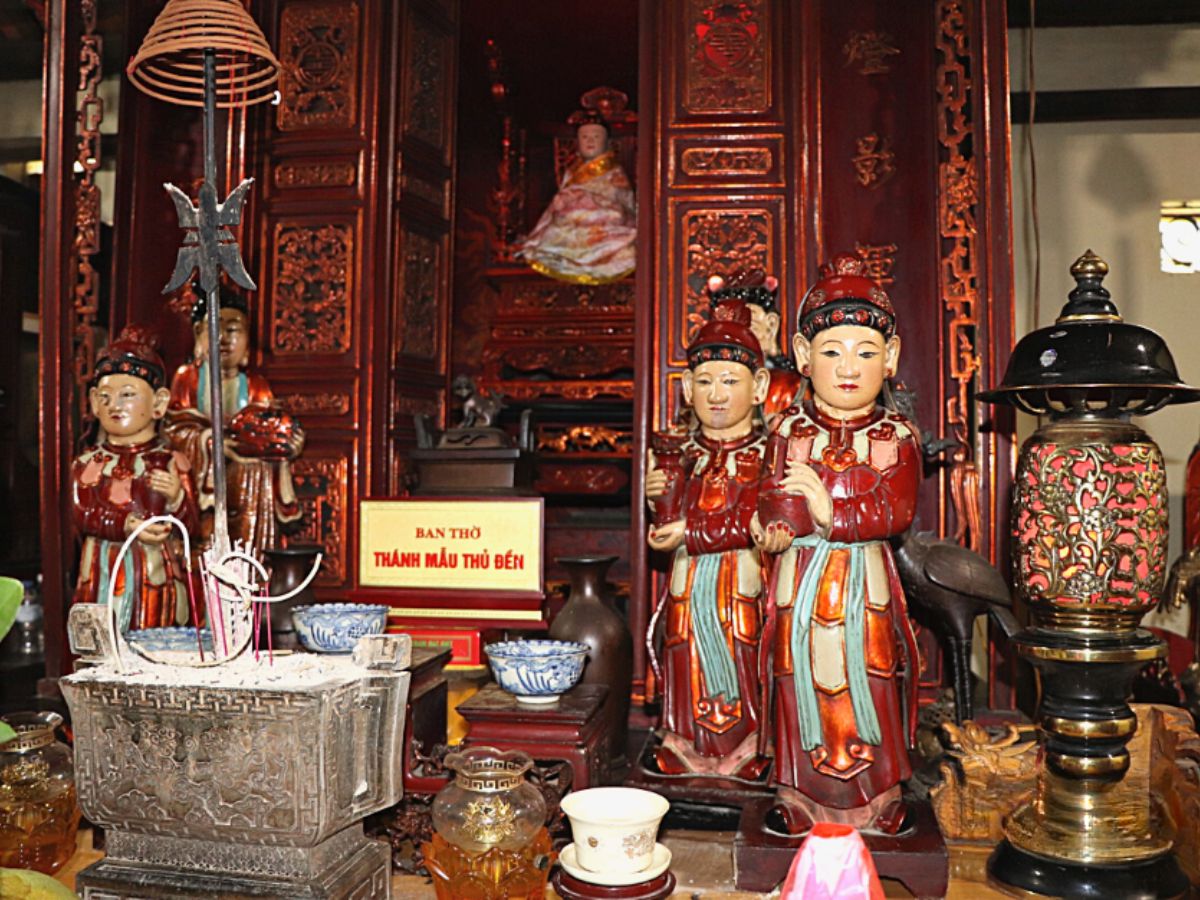
Altar inside Ba Vu Temple. (Source: Collected)
5. Cultural, spiritual values and types of festivals at Ba Vu Temple
5.1. Spiritual significance of Ba Vu Temple to locals and tourists.
Since being recognized as a national historical and cultural relic (1993), Ba Vu Temple has become a spiritual anchor for the people of Ha Nam and surrounding areas. It is not only a place of worship but also a space for traditional education, nurturing moral values for younger generations.
Locals believe that Bà Vũ bestows blessings, ensuring family peace and children's academic success. Many young couples visit the temple to pray for marriage and children, while children are brought by relatives to pray for good health and bright academic futures. Ba Vu Temple is also an important stop on the spiritual journey for visitors from near and far, thanks to its tranquil atmosphere and the story of the loyalty and altruism of Vietnamese women.
5.2. Traditional festival of Ba Vu Temple
The traditional festival of Ba Vu Temple is one of the unique cultural festivals in Ha Nam province. Annually, the festival is held in Vu Dien village to commemorate and honor the merits of Bà Vũ Nương, who helped King Lê Thánh Tông fight invaders. The festival is an occasion for local people and tourists to express gratitude to the Holy Mother, while praying for a year of favorable weather, bountiful harvests, and a peaceful and prosperous life.
The Ba Vu Temple festival is organized into two main parts: the ceremony and the festivities. The ceremony takes place solemnly with many traditional rituals reflecting the cultural identity of the riverine region, such as the palace procession, lion dance, drum beating to open the festival, and performances of ancient dances. The festivities are more vibrant with many attractive folk games, drawing a large number of locals and tourists.
In 2024, the Ba Vu Temple festival will be held from September 20 to 22 (Gregorian calendar), corresponding to August 18 to 20 (Lunar calendar). This is an opportunity for local people to continue to maintain and promote fine traditional cultural values, contributing to the preservation of the nation's heritage. The festival is a meaningful spiritual destination for those who wish to learn about the history and beliefs of the Ha Nam land.

The traditional festival at Đền Bà Vũ takes place annually, to express gratitude to the Holy Mother as well as pray for good fortune. (Source: Ha Nam TV)
6. Đền Bà Vũ from a literary and social education perspective
6.1. "The Woman of Nam Xuong" in literature and art.
"The Story of the Woman of Nam Xuong" by Nguyen Du in "Truyen ky man luc" is an outstanding work with profound humanistic value. This work is not only selected for the general education curriculum but also serves as material for performing arts such as spoken drama and traditional opera.
In the fields of painting and sculpture, the image of Ba Vu has also inspired many artists to create emotionally rich works, evoking the beauty of the female soul. Đền Bà Vũ is truly a source of inspiration for writers and artists, contributing to conveying values of altruism, fidelity, and sacrifice for justice across generations.
6.2. Social educational significance through the image of Ba Vu.
The image of Ba Vu has become a symbol of moral education, especially regarding loyalty, fidelity, and altruism. Through these touching stories, generations of students understand the meaning of silent sacrifice, patience, and sincere love.
Đền Bà Vũ always welcomes groups of students to learn and study, helping them directly engage with the nation's cultural heritage. Learning about Ba Vu, the younger generation will understand the Vietnamese tradition of emphasizing morality, family affection, and community responsibility, thereby forming strong character and social consciousness.

The Tale of Lady Nam Xuong has been adapted into a film by the talented director Tran Anh Hung. (Source: Collected)
7. Suggested Itinerary for Exploring Ba Vu Temple and Nearby Destinations 2025
7.1. Half-day Itinerary: Visiting Historical Sites, Experiencing Spiritual Ambiance.
Start early in the morning, arrive at Ba Vu Temple around 8 to 9 AM to enjoy the serene beauty in the morning sunlight. Spend 1.5 to 2 hours visiting the temple, listening to the guide recount historical stories, admiring valuable artifacts, and immersing yourself in the sacred atmosphere.
After visiting Ba Vu Temple, you can stop by the nearby Tran Thuong Temple to continue your journey exploring the historical sites of Ha Nam. At noon, enjoy local specialties such as Vu Dai village braised fish, Phu Ly steamed rolls at local eateries, exploring the colorful cuisine of Northern Vietnam.
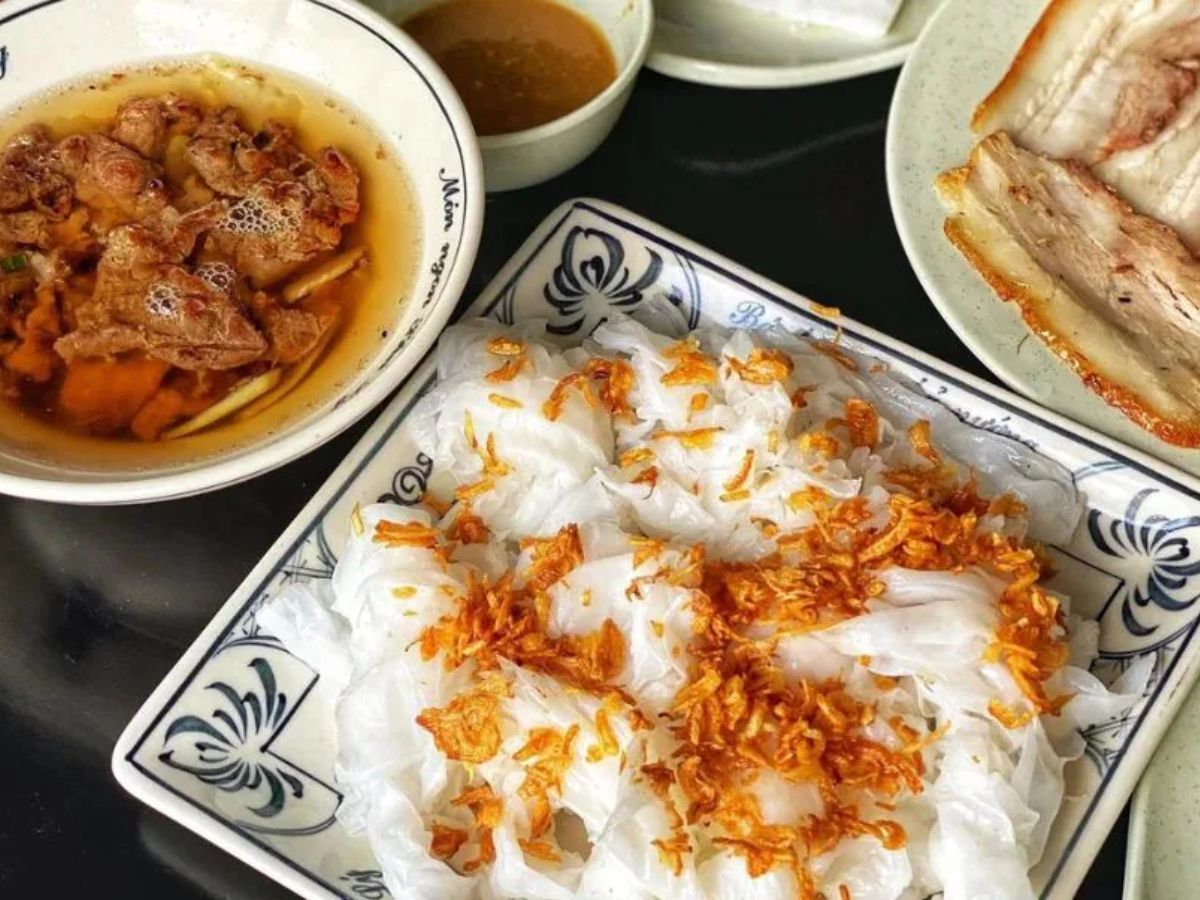
Phu Ly banh cuon cha is a must-try dish when visiting Ha Nam. (Source: Collected)
7.2. Combining festivals, culinary experiences, and the tourist ecosystem around the temple.
If you have a full day, you should combine it with attending the festival at Den Ba Vu Temple (if the timing is right) to feel the special, bustling traditional festival atmosphere. In the afternoon, you can visit nearby craft villages, learn about the process of crafting traditional folk handicraft products such as pottery and rattan weaving.
The ecological space next to Den Ba Vu Temple with fruit-laden orchards along the Red River offers a novel experience. You can also join a scenic boat tour, enjoy seasonal specialty fruits, and immerse yourself in the rhythm of life in the Northern countryside. A cozy dinner with dishes made from fresh ingredients from this land will be a memorable highlight to end the trip.
8. Experience visiting Den Ba Vu Temple: Notes to know 2025
8.1. Attire, behavior, and customs to note when visiting temples.
Visitors going to worship at Den Ba Vu Temple should choose modest attire such as an ao dai, long-sleeved shirt, paired with trousers or a long skirt. Avoid wearing overly tight, short, or brightly colored clothing. Footwear should prioritize low-heeled, soft types suitable for the sacred space.
Within the temple grounds, maintain a solemn attitude, speak softly, avoid making loud noises or excessive laughter. When offering sacrifices, follow instructions, do not arbitrarily touch statues or artifacts. Remind each other to maintain cleanliness, dispose of trash in designated areas, and follow the guidance of the heritage management board.
8.2. Tips for check-in photos, beautiful photo spots within the temple grounds.
The best time for photos at Den Ba Vu Temple is in the morning from 7 to 9 AM or late afternoon from 4 to 5 PM when the sunlight is gentle. The Tam Quan gate with its four tall pillars is an ideal spot, creating an impressive background for profound pictures.
The courtyard in front of the main hall and areas with old trees are popular check-in spots. The view from the riverbank towards the temple offers unique panoramic shots, especially on days with blue skies and white clouds. Note not to take photos in restricted areas and maintain a polite attitude, avoiding inappropriate poses in sacred areas.
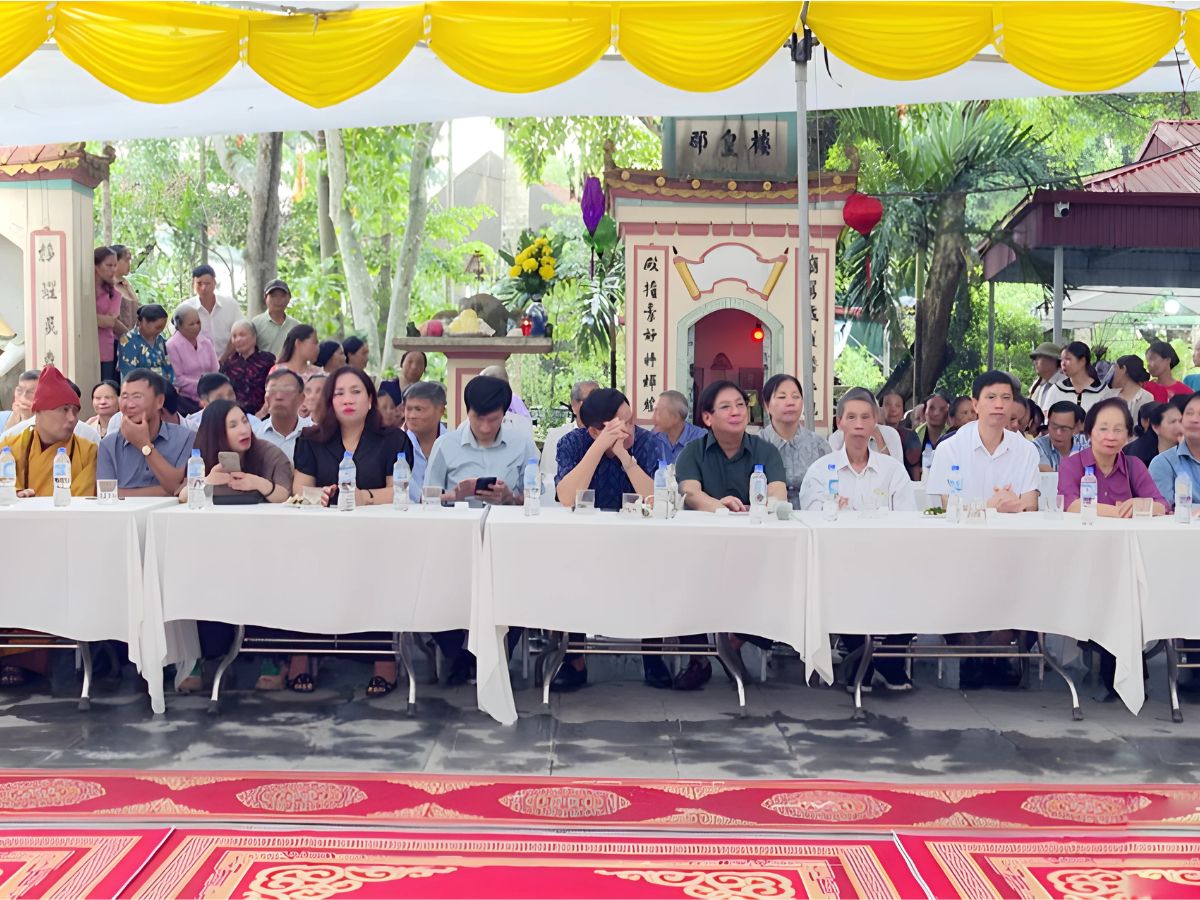
Temple of Ba Vu (Den Ba Vu) is a prominent testament to the blend of history, literature, and spiritual beliefs of Vietnamese people. Each visit to this place is a meaningful occasion to deeply feel traditional values and spread good things about love, fidelity, and altruism amidst modern life.

